Mawangdui Han Tombs: Unraveling 2,000 Years of Chinese History
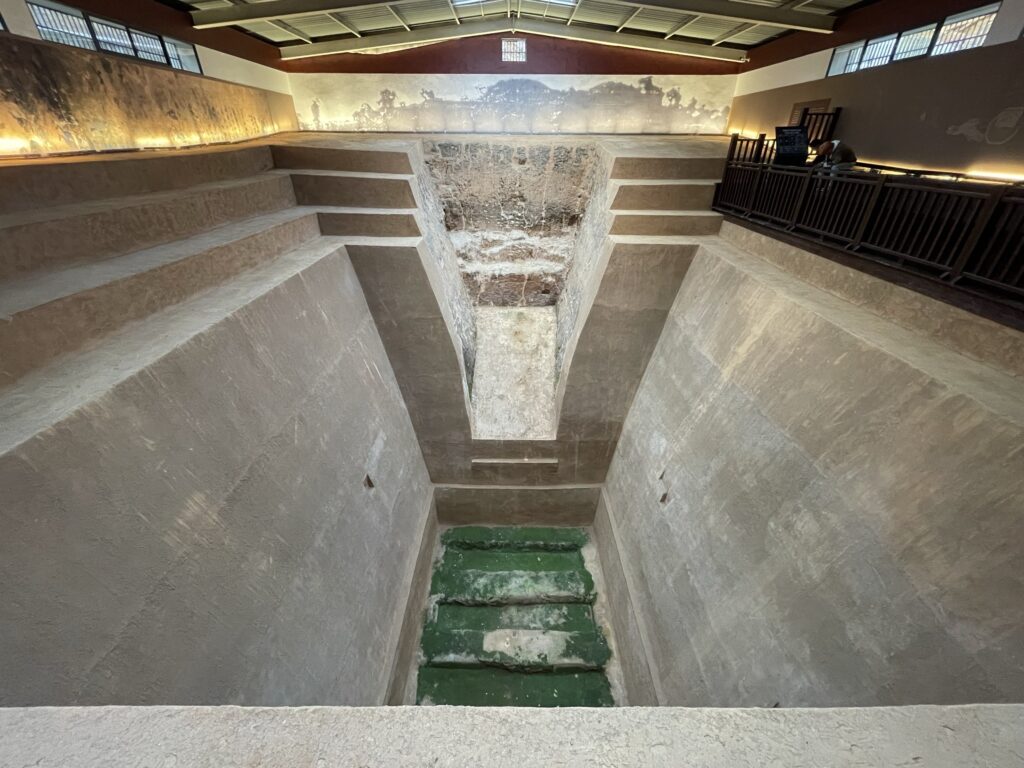
An Essential Guide to Visiting Mawangdui Han Tombs
In This Guide
- An Essential Guide to Visiting Mawangdui Han Tombs
- The Rich History and Legends of Mawangdui Han Tombs
- Main Highlights: What You Absolutely Can’t Miss
- Planning Your Visit: A Practical Guide
- Tickets: Prices, Booking, and Tips
- How to Get There: A Complete Transportation Guide
- Local Cuisine and Accommodation Nearby
- Frequently Asked Questions
- Final Thoughts on Your Trip
Nestled in the eastern suburbs of Changsha, the Mawangdui Han Tombs offer an extraordinary glimpse into the opulent world of the Western Han Dynasty (206 B.C. – A.D. 24). This remarkable archaeological site, which served as the final resting place for aristocrats of the Changsha State, is not just a burial ground but a treasure trove of history that has captivated scholars and travelers alike.
A Journey Through Time
Discovered in the early 1970s, the Mawangdui Han Tombs consist of three main tombs, each revealing layers of rich cultural heritage. Tomb No. 1, the largest, is famously known for the remarkably preserved mummy of Lady Dai, whose well-maintained remains allow researchers to study ancient health and burial practices. The tombs, constructed with large cypress planks and layered with white clay and charcoal, reflect the unique burial customs of the time, eschewing precious metals in favor of simplicity in line with Emperor Wen of Han’s directives.
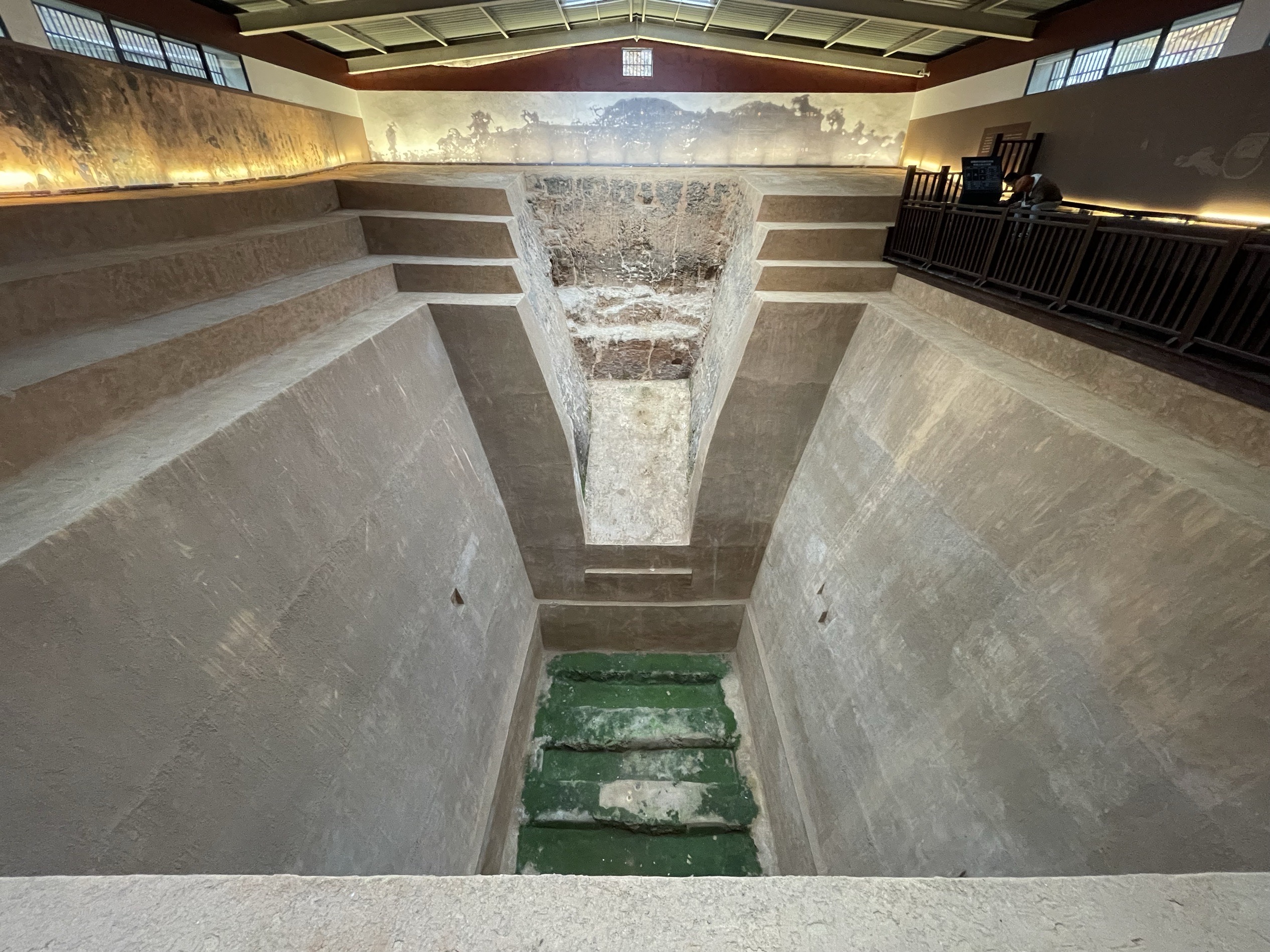
Mawangdui Han Tombs.
Key Highlights
-
Lady Dai’s Mummy: The most iconic finding, this mummy is a testament to the advanced embalming techniques of the Han Dynasty. Visitors can learn about her life and the circumstances surrounding her death, which was determined to be a heart attack through modern autopsy methods.
-
Cultural Relics: Over 3,000 artifacts have been unearthed, including silk paintings, lacquered coffins, and medicinal manuscripts. Many of these are now housed in the Hunan Provincial Museum, making it a perfect complement to your visit to the tombs.
-
Tomb Architecture: The layout of the tombs is sophisticated, with nested lacquered coffins and a design that speaks to the status of the individuals interred within. Tomb No. 3 remains accessible to visitors, while others have been filled to protect their contents.
Visitor Information
- Location: Mawangdui Town, Changsha, Hunan Province
- Opening Hours:
- April to October: 8:00 AM – 4:30 PM
- November to March: 9:00 AM – 4:00 PM
- Admission: A small fee grants you access to the site, with Tomb No. 3 and the exhibition hall open for exploration.
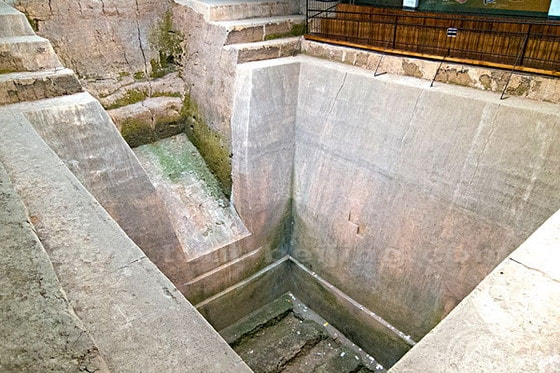
Mawangdui Han Tombs.
Planning Your Visit
To make the most of your experience, consider pairing your visit to the Mawangdui Han Tombs with a trip to the nearby Hunan Provincial Museum, where you can see many of the artifacts recovered from the site. Additionally, the vibrant city of Changsha offers a wealth of cultural landmarks, such as the Yuelu Mountain Scenic Zone and Orange Island Park, ensuring that your journey through this historic region is as enriching as it is enjoyable.
Exploring the Mawangdui Han Tombs is not just about witnessing the past; it’s about connecting with a narrative that has shaped Chinese history. With each artifact and each whisper of the tombs, you step closer to understanding a civilization that thrived over two millennia ago. Whether you are a history buff or a curious traveler, the Mawangdui Han Tombs promise to leave an indelible mark on your exploration of China’s rich cultural tapestry.
The Rich History and Legends of Mawangdui Han Tombs
Nestled in the eastern suburbs of Changsha, Hunan Province, the Mawangdui Han Tombs offer a fascinating glimpse into the rich tapestry of ancient Chinese history. This archaeological site, dating back to the early Western Han Dynasty (206 B.C. – A.D. 24), is not merely a collection of burial chambers; it is a time capsule that encapsulates the cultural, artistic, and medical advancements of its era.
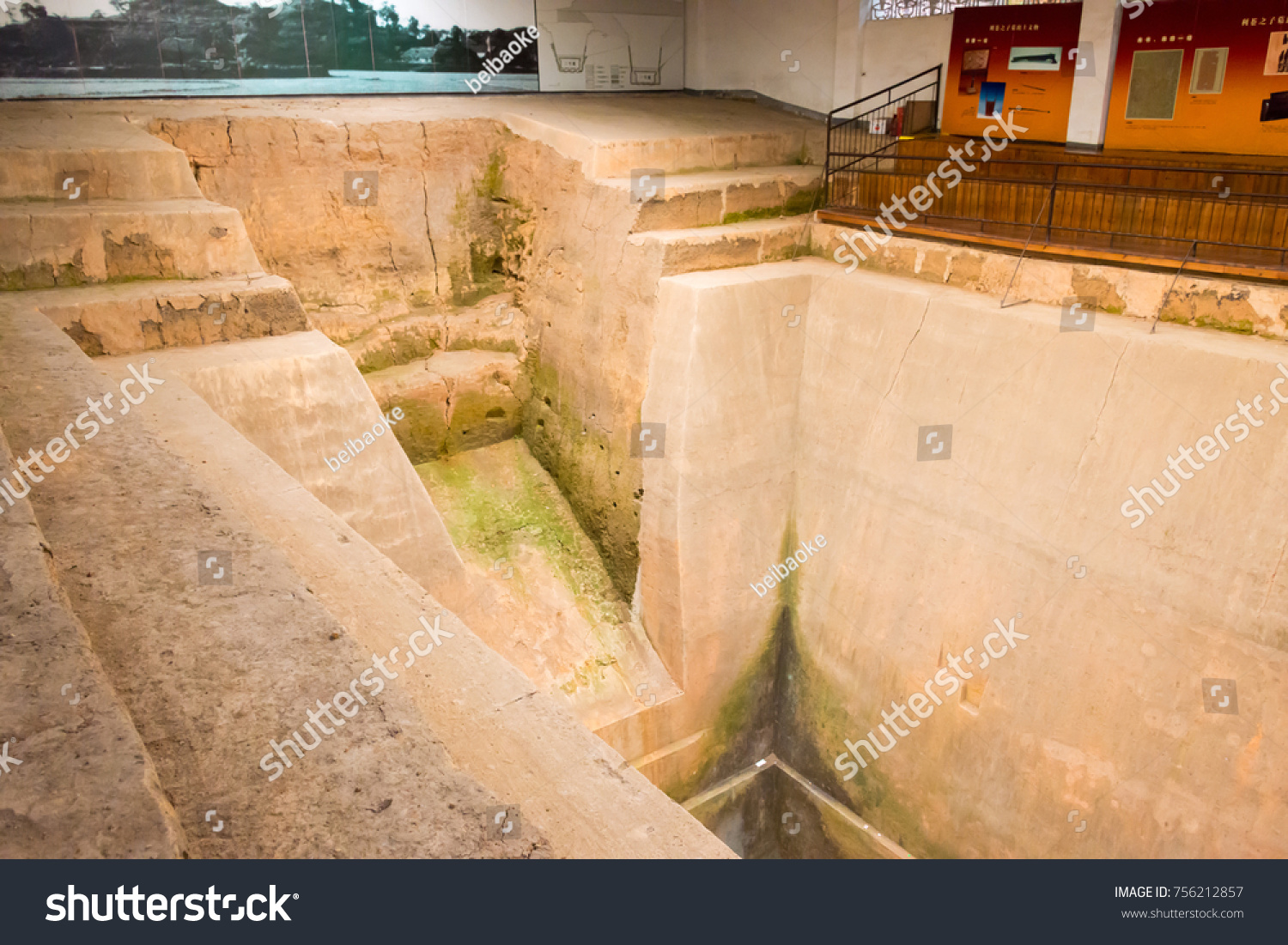
Mawangdui Han Tombs.
Significance of the Site
The Mawangdui Tombs are among the most significant archaeological discoveries of the 20th century in China. Excavated between 1972 and 1974, the three tombs belonged to the aristocrats of the Changsha State, specifically to the family of Li Cang, the first Marquis of Dai. The site serves as a family graveyard, revealing the customs and beliefs surrounding death and the afterlife during the Han Dynasty.
The Tombs and Their Inhabitants
- Tomb No. 1:
-
The most notable of the three, this tomb contained the remarkably preserved mummy of Lady Dai (Xin Zhui), who is believed to have died in her fifties. Her remains were so well-preserved that researchers conducted an autopsy, revealing she likely succumbed to a heart attack. The tomb yielded over 3,000 artifacts, including exquisite silk garments, lacquerware, and a wealth of medical and astronomical manuscripts. The preservation techniques used in her burial offer invaluable insights into ancient embalming practices.
-
Tomb No. 2:
-
This tomb is the resting place of Li Cang, who was appointed as chancellor of Changsha. Unfortunately, it has been subject to significant plundering over the centuries. Despite this, some artifacts unearthed from this tomb shed light on the opulence and status of its occupant, showcasing the intricate craftsmanship of the Han Dynasty.
-
Tomb No. 3:
- Located directly south of Tomb No. 1, this tomb contained the remains of a man in his thirties, believed to be a relative of Li Cang. Within its confines, archaeologists discovered a trove of military, medical, and astronomical manuscripts written on silk, highlighting the intellectual pursuits of the era.
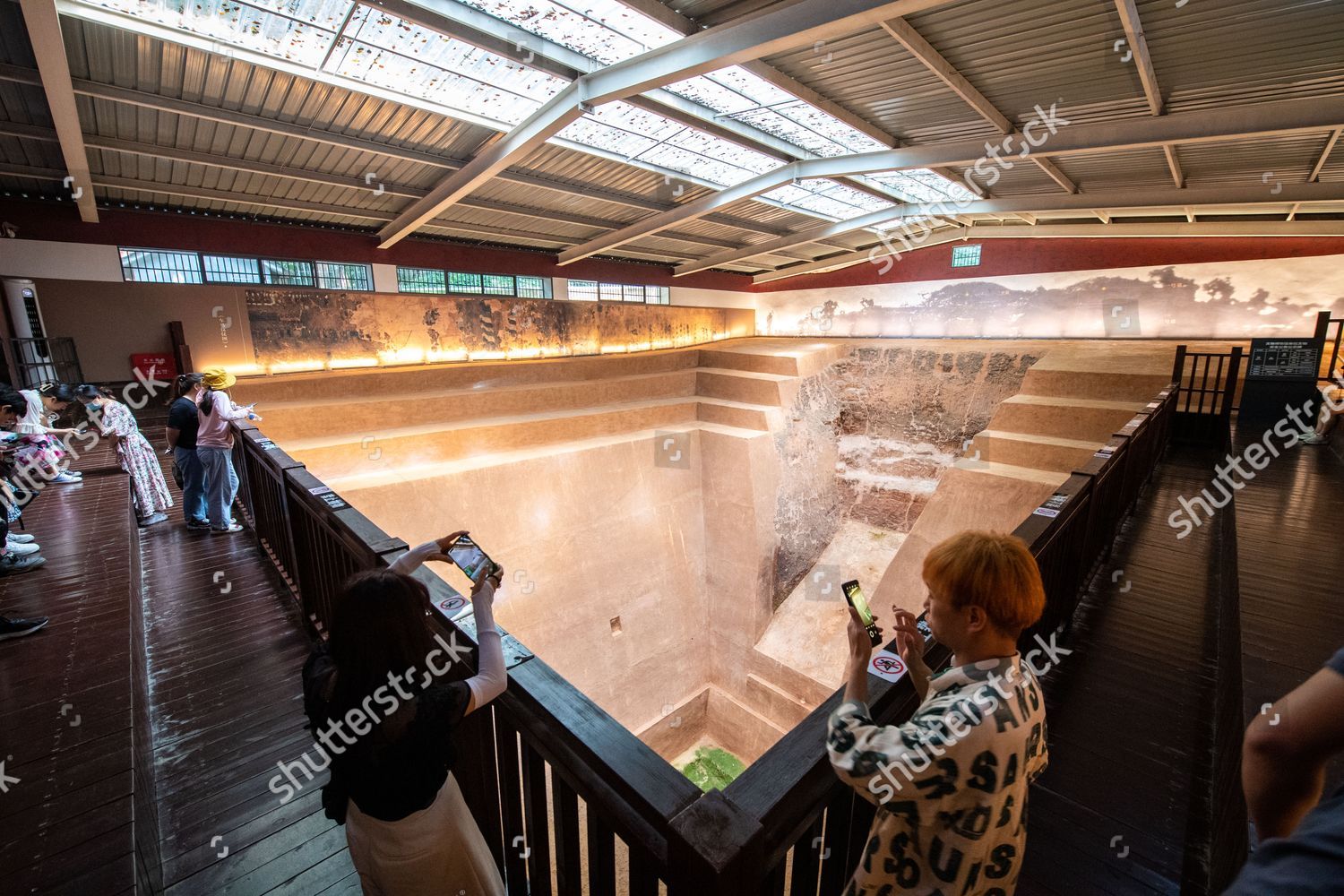
Mawangdui Han Tombs.
Architectural Wonders
The construction of the tombs reflects the advanced engineering and artistry of the Han Dynasty. Built from large cypress planks and layered with white clay and charcoal—a practice originating from the Chu burial customs—the tombs featured nested lacquered coffins, showcasing the elegance and sophistication of Han funerary art. The meticulous layout and design of these tombs illustrate the importance placed on burial rituals and the afterlife by the aristocracy.
Legends and Cultural Impact
The legends surrounding the Mawangdui Han Tombs contribute to their allure. Lady Dai’s story, in particular, has captured the imagination of historians and visitors alike. Her well-preserved body and the luxurious grave goods discovered alongside her have led to speculation about her life, her status, and the mysteries of her death. Many view her as a symbol of the cultural and artistic achievements of the Han Dynasty, representing both beauty and the ephemeral nature of life.
The artifacts recovered from the Mawangdui site have also sparked interest in traditional Chinese medicine and the early scientific endeavors of the Han people. The manuscripts found in Tomb No. 3, for instance, reveal a deep understanding of medicine, astronomy, and military strategy, showcasing the intellectual vibrancy of the time.
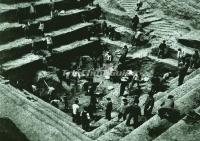
Mawangdui Han Tombs.
Visiting the Mawangdui Han Tombs
For modern travelers, a visit to the Mawangdui Han Tombs is a journey back in time. The site is accessible to the public, with Tomb No. 3 and an exhibition hall showcasing the treasures unearthed from the site. As you stroll through this ancient burial ground, you cannot help but feel a connection to the past, a reverence for those who once inhabited this land, and an appreciation for the cultural heritage that continues to thrive in contemporary China.
In conclusion, the Mawangdui Han Tombs are not just an archaeological site; they are a testament to the enduring legacy of the Han Dynasty. They invite travelers to explore the depths of Chinese history, to ponder the stories of those who came before, and to marvel at the artistry that has stood the test of time.
Main Highlights: What You Absolutely Can’t Miss
When exploring the Mawangdui Han Tombs in Changsha, Hunan Province, you’ll step into a remarkable chapter of China’s ancient history. This site, a significant archaeological discovery from the early Western Han Dynasty, unveils the lives and customs of the aristocrats of Changsha State over 2,000 years ago. Here are the main highlights you simply can’t miss:
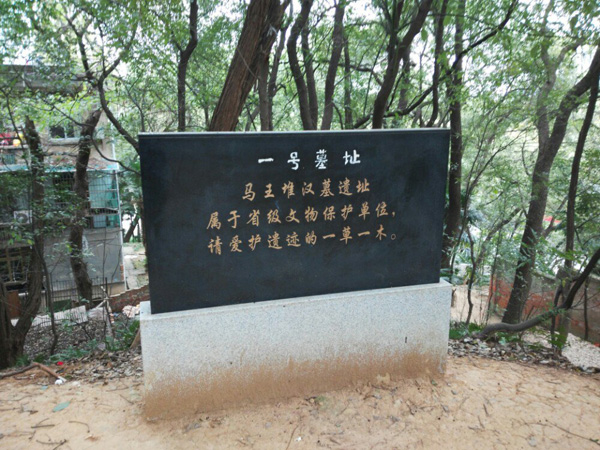
Mawangdui Han Tombs.
1. The Tombs Themselves
The Mawangdui Han Tombs consist of three distinct burial sites, each offering a glimpse into the grandeur of Han-era funerary practices. Tomb No. 1 is the largest and most well-preserved, housing the remains of Lady Dai, whose remarkably preserved mummy has intrigued researchers worldwide. Tomb No. 2 is the resting place of Li Cang, the first Marquis of Dai, while Tomb No. 3 remains accessible for visitors and contains a wealth of manuscripts on silk, showcasing military, medical, and astronomical knowledge.
2. The Famous Lady Dai
Lady Dai (Xin Zhui) is perhaps the most famous resident of Mawangdui. Her mummified body, astonishingly intact, provides rare insights into ancient Chinese health, diet, and even her cause of death—believed to be a heart attack. Visitors often marvel at the exquisite silk garments and artifacts buried with her, which highlight the craftsmanship and luxury of the Han Dynasty.
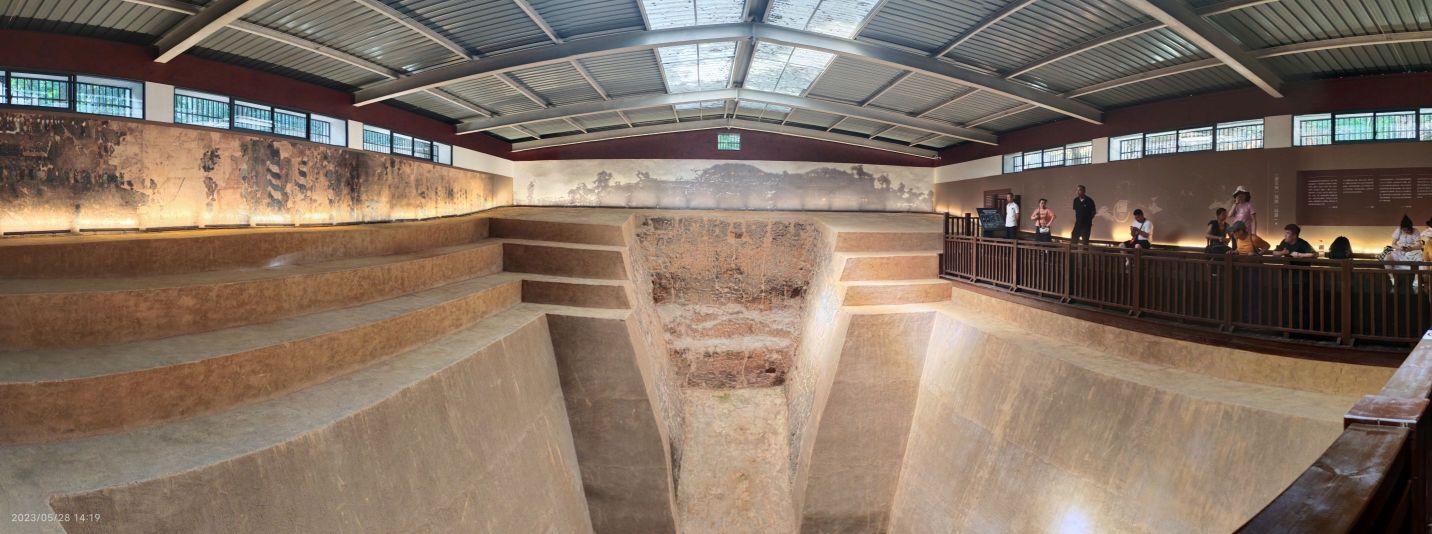
Mawangdui Han Tombs.
3. Exquisite Artifacts
Over 3,000 cultural relics were excavated from the tombs, including intricately designed silk paintings, lacquerware, and even a gauze cloth weighing only 49 grams. These items are now housed in the Hunan Provincial Museum, where they are displayed, allowing visitors to appreciate the advanced artistry and rich cultural heritage of the Han Dynasty.
4. Unique Burial Practices
The Mawangdui tombs exemplify unique burial customs of the time. Constructed from large cypress planks and layered with clay and charcoal, these tombs reflect a blend of Chu burial traditions and Han practices. Notably, the absence of jade and precious metals in the tombs adheres to the burial guidelines established by Emperor Wen of the Han Dynasty.
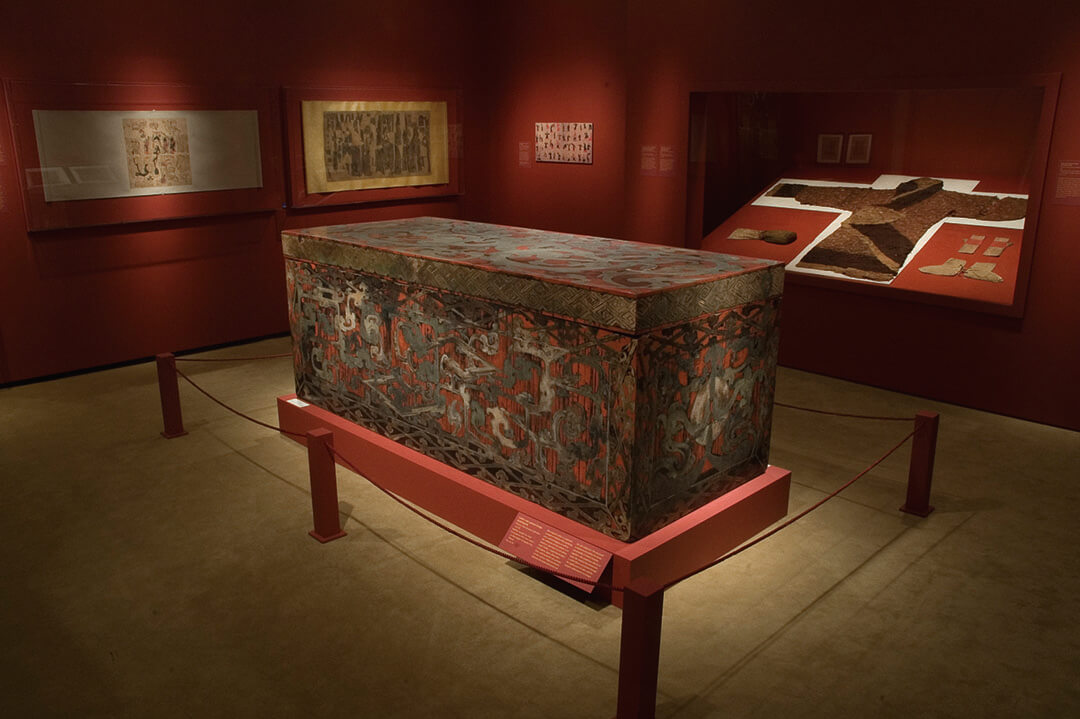
Mawangdui Han Tombs.
5. The Historical Context
The Mawangdui Han Tombs serve as an open book to the West Han Dynasty (206 BC – 24 AD). Excavated between 1972 and 1974, these tombs provide invaluable historical context and insight into the socio-political dynamics of the time, making them a must-visit site for history enthusiasts.
6. Accessibility and Visitor Experience
While Tombs No. 1 and No. 2 are filled and not open to the public, Tomb No. 3 has been preserved and is covered by a ceiling, allowing visitors to explore its contents in a controlled environment. The site is open year-round, with varying hours depending on the season, making it an easily accessible destination for travelers.
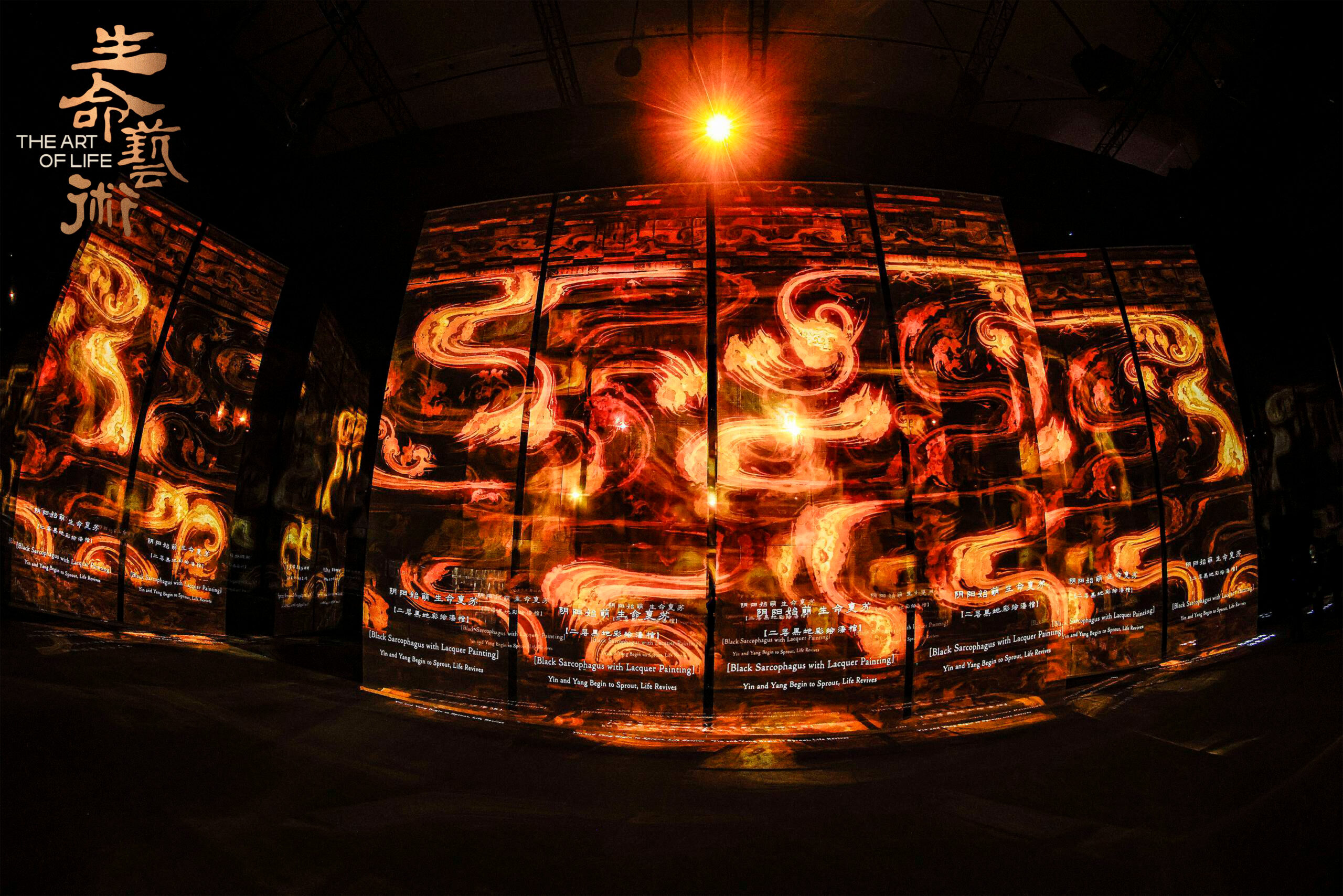
Mawangdui Han Tombs.
7. Nearby Attractions
After visiting the Mawangdui tombs, consider exploring other nearby attractions such as the Hunan Provincial Museum, Yuelu Mountain, and Tianxin Pavilion Park. These sites complement your historical journey through Changsha and showcase the city’s vibrant cultural landscape.
Conclusion
The Mawangdui Han Tombs are not just a window into the past; they are a treasure trove of history, art, and culture that every international traveler should experience. As you walk through this ancient site, you’ll gain a deeper understanding of China’s rich heritage and the remarkable lives of its people from centuries ago. Don’t miss the opportunity to explore this extraordinary landmark and the stories it holds.
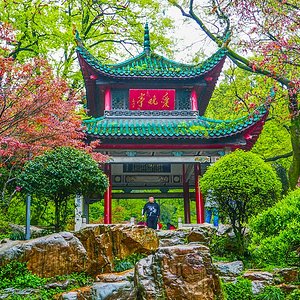
Mawangdui Han Tombs.
Planning Your Visit: A Practical Guide
Discovering Mawangdui Han Tombs: A Traveler’s Guide
Embark on a journey to the Mawangdui Han Tombs, an archaeological marvel nestled in the eastern suburbs of Changsha, Hunan Province. This site is not just a burial ground; it’s a window into the rich tapestry of China’s Han Dynasty (206 BC – 24 AD) and a treasure trove of cultural relics that tell stories of a bygone era.
Getting There
Location:
Mawangdui Han Tombs
No. 89, Guhan Road, Furong District, Changsha City, Hunan Province
Transportation:
– By Metro: The nearest metro station is Xiangya Hospital, just a short 9-minute walk from the tombs.
– By Bus: Several local buses serve the area, making it accessible from various points within Changsha.
– By Taxi: Taxis are readily available throughout the city and provide a convenient option for direct travel.
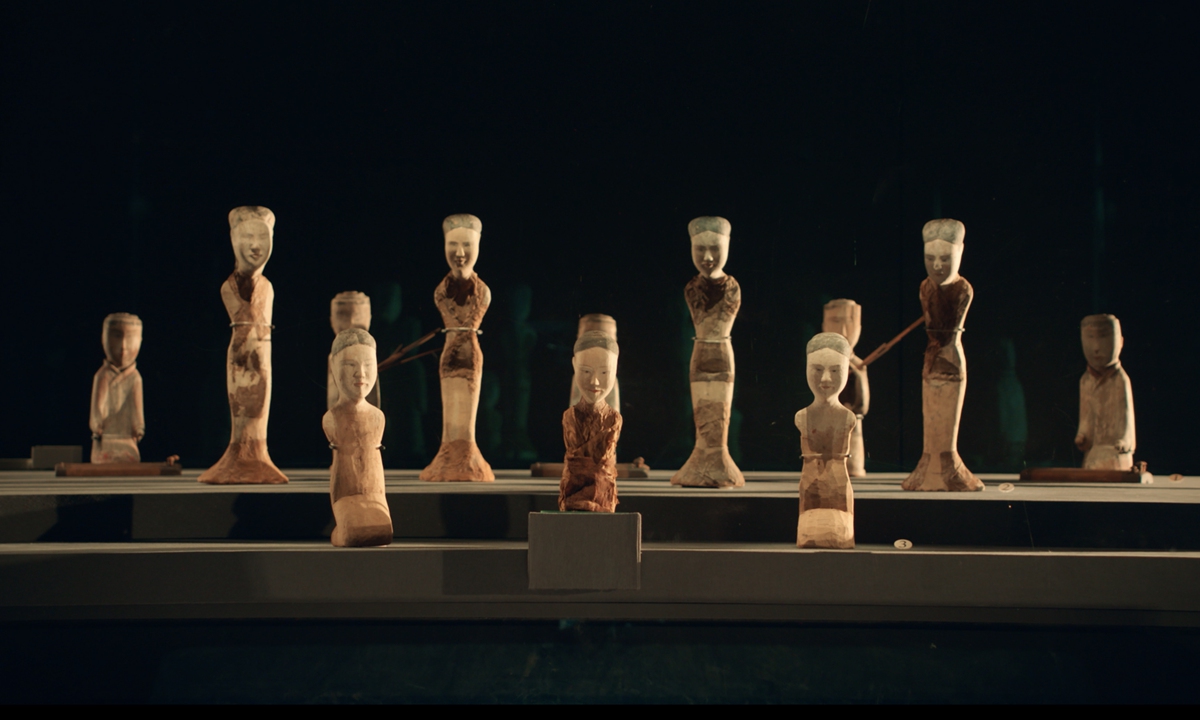
Mawangdui Han Tombs.
Opening Hours
- April to October: 8:00 AM – 4:30 PM
- November to March: 9:00 AM – 4:00 PM
Last admission is 30 minutes before closing, so plan accordingly to make the most of your visit.
Ticket Information
- Admission Fee: Entrance to the Mawangdui Han Tombs is subject to a ticket fee. It is advisable to purchase tickets in advance or check for any promotions online to ensure a seamless experience.
What to See
The Mawangdui Han Tombs comprise three burial sites, with Tomb No. 1 being the highlight. Here’s what you can expect:
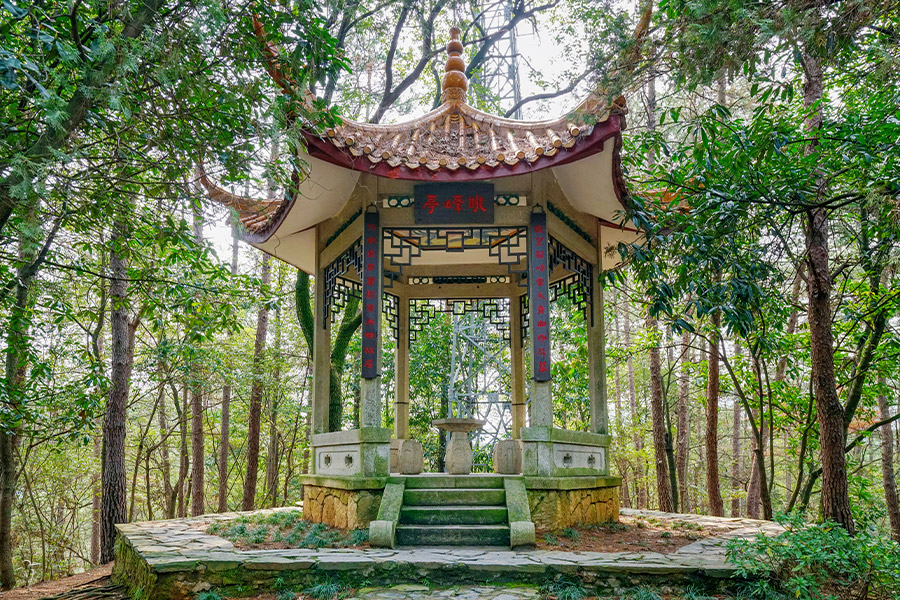
Mawangdui Han Tombs.
- Tomb No. 1: Home to the remarkably preserved mummy of Lady Dai, this tomb showcases intricate silk garments, lacquerware, and other treasures that reflect the sophistication of Han funerary practices.
- Tomb No. 2: The resting place of Li Cang, the first Marquis of Dai, though it has been plundered over the years, it still offers insights into the burial customs of the time.
- Tomb No. 3: This tomb is preserved for public viewing and contains manuscripts that shed light on military, medical, and astronomical knowledge from the Han era.
Exhibits:
The artifacts uncovered from these tombs, including silk paintings and rare manuscripts, are housed in the nearby Hunan Provincial Museum, which is highly recommended for a deeper understanding of the site’s historical significance.
Visitor Tips
- Guided Tours: Consider joining a guided tour for a more enriching experience. Knowledgeable guides can provide insights and stories that bring the history to life.
- Photography: Capture the beauty of the site, but be respectful of the cultural significance. Some areas may have restrictions on photography.
- Timing Your Visit: Early morning or late afternoon visits are ideal for fewer crowds and better lighting for photographs.
Nearby Attractions
Extend your exploration of Changsha by visiting these nearby landmarks:
- Hunan Provincial Museum: Home to the artifacts from Mawangdui, it provides a broader context of Hunan’s history.
- Yuelu Mountain Scenic Zone: A picturesque area perfect for hiking and enjoying nature.
- Orange Island: A beautiful park known for its scenic views and cultural significance.
- Tianxin Pavilion Park: A historic site offering panoramic views of Changsha.
Accommodation
For a memorable stay, consider booking a room at the Manxi Hotel (Hunan Provincial Museum Branch), which combines modern amenities with a cultural experience, just a short distance from the tombs. The hotel features rooms inspired by local history, and offers unique dining experiences that reflect Hunan cuisine.
Conclusion
The Mawangdui Han Tombs are not just a destination; they are a journey through time. By planning ahead, you can fully immerse yourself in the history and culture of one of China’s most significant archaeological sites. Whether you’re captivated by ancient artifacts or the stories of the past, Mawangdui promises an unforgettable experience.
Tickets: Prices, Booking, and Tips
Visiting the Mawangdui Han Tombs is an unforgettable journey through ancient Chinese history, and planning your visit is crucial to ensure a smooth experience. Here’s everything you need to know about ticket prices, booking options, and helpful tips for your trip.
Ticket Prices
General Admission:
– Adults: Approximately ¥50 (Chinese Yuan)
– Students and Seniors: Reduced rates typically apply, so check for specific discounts.
Special Exhibitions:
– Occasionally, the site may host special exhibitions or events that might require additional fees. It’s advisable to check the official website or local announcements.
Opening Hours
- April to October: 8:00 AM to 4:30 PM
- November to March: 9:00 AM to 4:00 PM
- Note: Last admission is typically 30 minutes before closing time.
Booking Tickets
Online Booking:
– Tickets can be conveniently purchased online through various travel platforms, including Trip.com and other local tour operators. Booking in advance is recommended, especially during peak tourist seasons.
On-Site Purchase:
– If you prefer spontaneity, tickets are available for purchase at the entrance. However, be prepared for potential waiting times, particularly on weekends and holidays.
Tips for Your Visit
-
Guided Tours: Consider joining a guided tour for a more enriching experience. Knowledgeable guides can provide insights into the history, significance, and fascinating artifacts uncovered from the tombs.
-
Timing Your Visit: Arrive early in the morning to enjoy a quieter experience and to avoid the crowds. This is especially beneficial for photography and exploring the site at your own pace.
-
Explore Nearby Attractions: The Mawangdui Han Tombs are located near the Hunan Provincial Museum, which houses many artifacts from the tombs. Plan to visit both sites to enhance your understanding of the region’s cultural heritage.
-
Cultural Etiquette: As a significant historical site, maintain respect for the tombs and surrounding areas. Follow all guidelines provided by staff and refrain from touching artifacts or climbing on structures.
-
Dining Options: After your visit, consider dining at local restaurants to savor Hunan cuisine. Dishes like spicy fish and stinky tofu are local favorites that offer a perfect way to round off your historical journey.
By following these tips and securing your tickets ahead of time, you’ll be well-prepared to embark on a captivating exploration of the Mawangdui Han Tombs, a true testament to China’s rich historical tapestry.
How to Get There: A Complete Transportation Guide
Getting to Mawangdui Han Tombs: Your Transportation Guide
Visiting the Mawangdui Han Tombs in Changsha offers a unique glimpse into ancient Chinese history, and getting there is a journey worth planning. Below, you’ll find essential information on how to reach this remarkable archaeological site, ensuring a smooth and enjoyable experience.
Location Overview
Mawangdui Han Tombs are situated in Mawangdui Town, located in the eastern suburbs of Changsha, Hunan Province. This historic site is approximately 6 kilometers from the Changsha city center.
Getting to Changsha
Before heading to the tombs, you’ll likely arrive in Changsha via one of the following methods:
- By Air:
-
Changsha Huanghua International Airport (CSX) is the main airport, with both domestic and international flights. Once you land, you can take a taxi or use ride-hailing apps to get to the city center.
-
By Train:
-
Changsha has a well-connected railway system, including high-speed trains from major cities like Beijing, Shanghai, and Guangzhou. The main train station is Changsha Railway Station, which is conveniently located in the city.
-
By Bus:
- Long-distance buses from nearby cities also arrive at the Changsha Long-distance Bus Station. This is a more economical option, especially for travelers coming from Hunan Province.
Reaching Mawangdui Han Tombs
Once you’re in Changsha, here are the best options to get to the Mawangdui Han Tombs:
- By Metro:
-
Take Line 2 of the Changsha Metro and get off at Mawangdui Station. From there, it’s a short 10-minute walk to the tombs. This is one of the most convenient methods, especially during peak traffic hours.
-
By Taxi/Ride-Hailing Service:
-
Taxis are widely available, and ride-hailing apps like Didi are popular among locals. Simply input “Mawangdui Han Tombs” as your destination, and you can enjoy a direct ride from anywhere in Changsha. The fare from the city center should range from ¥20 to ¥40.
-
By Bicycle:
- For the adventurous traveler, renting a bicycle is a great way to explore Changsha while enjoying the scenery. The ride to Mawangdui will take about 30-40 minutes from the city center, and it allows you to soak in the local atmosphere.
Travel Tips
- Opening Hours: The tombs are open from 8:00 AM to 4:30 PM from April to October, and 9:00 AM to 4:00 PM from November to March. Plan your visit accordingly to ensure you have enough time to explore.
- Tickets: Admission to the site is usually required, so consider purchasing your tickets in advance or check for promotions online to make the most of your visit.
- Local Amenities: Nearby, you’ll find the Hunan Provincial Museum, which houses many of the artifacts unearthed from the tombs. This can complement your visit nicely, so consider adding it to your itinerary.
By following this transportation guide, you can easily navigate your way to the Mawangdui Han Tombs and immerse yourself in the fascinating history of the Western Han Dynasty. Enjoy your journey through time!
Local Cuisine and Accommodation Nearby
After immersing yourself in the rich history of the Mawangdui Han Tombs, treat your taste buds to the vibrant flavors of Hunan cuisine and find a cozy place to rest nearby. Changsha, the capital of Hunan Province, is not only a treasure trove of cultural heritage but also offers a delightful culinary scene and comfortable accommodations for travelers.
Savoring Hunan’s Culinary Delights
Hunan cuisine is renowned for its bold flavors, especially the use of chili peppers, garlic, and fresh ingredients. Here are some must-try dishes and local eateries to experience the region’s culinary artistry:
-
Stinky Tofu (臭豆腐): A beloved street food, this deep-fried delicacy has a pungent aroma but offers a delightful crunch and savory taste. Look for vendors near the Mawangdui area for an authentic experience.
-
Spicy Fish Head (剁椒鱼头): A Hunan specialty, this dish features a fish head steamed with a fiery chili sauce. It’s a must-try for those who enjoy bold, spicy flavors. Visit Lao Gan Ma restaurant for a renowned version.
-
Dong’an Chicken (东安鸡): This dish combines chicken with a spicy, tangy sauce made from chili, vinegar, and garlic, showcasing the region’s love for heat. Head to Hunan Cuisine Hall for a delicious serving.
-
Chairman Mao’s Red-Braised Pork (毛氏红烧肉): A dish said to be favored by the famous leader himself, this sweet and savory pork belly is simmered to perfection. You can find it at Mao’s Family Kitchen, where traditional recipes are honored.
Comfortable Stays Near Mawangdui
For accommodations that blend comfort with cultural immersion, consider the following options, all conveniently located near the Mawangdui Han Tombs:
-
Manxi Hotel (Hunan Provincial Museum Branch): Nestled just 590 meters from the Hunan Provincial Museum, this hotel offers a unique blend of modern design and historical aesthetics. Rooms start from ¥399 per night, providing a tranquil escape with cultural touches like silk paintings and local decor. The hotel features an innovative dining experience and activities celebrating Hunan’s rich heritage.
-
Hilton Changsha: A luxury option with stunning views of the city and the Xiang River, the Hilton offers a range of amenities including a fitness center and multiple dining options. Rooms start at about ¥800 per night, making it a comfortable choice for travelers seeking a touch of elegance after a day of exploration.
-
Changsha Hunan Hotel: This hotel combines convenience and affordability, with rooms starting around ¥200 per night. It is well-situated for exploring local attractions, and the staff can provide recommendations for nearby eateries and historical sites.
Exploring the Area
After indulging in the flavors of Hunan and resting up, take the time to explore other nearby attractions such as:
-
Hunan Provincial Museum: Home to a vast collection of artifacts, including those unearthed from the Mawangdui Han Tombs, this museum is a must-visit for history enthusiasts.
-
Martyrs’ Park: A peaceful retreat in the heart of the city, perfect for a leisurely stroll and to reflect on Hunan’s rich history.
-
Yuelu Mountain: For nature lovers, this scenic area offers hiking trails, ancient academies, and stunning views of Changsha.
With a rich history and vibrant culture, your visit to the Mawangdui Han Tombs can be complemented by Hunan’s exquisite cuisine and welcoming accommodations, ensuring an unforgettable experience in Changsha.
Frequently Asked Questions
Frequently Asked Questions
1. Where are the Mawangdui Han Tombs located?
The Mawangdui Han Tombs are situated in Mawangdui Town, in the eastern suburbs of Changsha, Hunan Province, China. The site is easily accessible from the city center and is part of a rich historical area.
2. What are the opening hours for the Mawangdui Han Tombs?
The tombs are open to visitors during the following hours:
– April to October: 8:00 AM to 4:30 PM
– November to March: 9:00 AM to 4:00 PM
Please note that admission ends 30 minutes before closing time.
3. What can I expect to see at the Mawangdui Han Tombs?
Visitors can explore three tombs, with Tomb 3 being the only one currently open to the public. Key highlights include:
– The well-preserved mummy of Lady Dai, the wife of Li Cang.
– A vast collection of ancient artifacts, including silk paintings and lacquerware.
– Insight into the burial customs of the Western Han Dynasty.
4. Is there an entry fee for visiting the tombs?
Yes, there is an admission fee to enter the Mawangdui Han Tombs. It is advisable to check local resources or ticket outlets for the most current pricing and any potential discounts.
5. How do I get to the Mawangdui Han Tombs from Changsha city center?
The tombs are easily reachable via public transportation. You can take a taxi, or use local buses that head towards the eastern suburbs. Some visitors also opt for guided tours that include transportation.
6. Are there any facilities available for visitors at the site?
Yes, there are facilities available, including restrooms and a small exhibition hall where visitors can learn more about the artifacts unearthed from the tombs. Additionally, nearby attractions, such as the Hunan Provincial Museum, enhance the visitor experience.
7. What is the historical significance of the Mawangdui Han Tombs?
The Mawangdui Han Tombs are one of the most significant archaeological discoveries in China, providing a glimpse into the life and customs of the Western Han Dynasty (206 BC – AD 24). The well-preserved artifacts and burial practices contribute vital knowledge to the study of ancient Chinese civilization.
8. Are guided tours available at the Mawangdui Han Tombs?
Yes, guided tours are often available and are highly recommended for an enriching experience. Knowledgeable guides can provide valuable insights into the historical context of the tombs and the significance of the artifacts uncovered during excavations.
Final Thoughts on Your Trip
As you reflect on your journey to the Mawangdui Han Tombs, you are not just revisiting a historical site; you are immersing yourself in the ancient narrative of China’s glorious past. This archaeological marvel, nestled in the picturesque landscape of Changsha, serves as a time capsule, illuminating the customs, artistry, and familial bonds of the Western Han Dynasty.
A Journey Through Time
The experience of walking through the remnants of the tombs, particularly Tomb No. 3, offers a unique glimpse into the lives of the aristocrats who once thrived in this region. The remarkable preservation of Lady Dai’s mummified body and the exquisite artifacts unearthed from the tombs narrate stories of love, status, and the deep-seated traditions that shaped Chinese culture over two millennia ago.
Cultural Riches Await
The nearby Hunan Provincial Museum complements your visit, showcasing an array of artifacts that further enrich your understanding of the Han Dynasty. From silk paintings to intricate lacquerware, the treasures on display are a testament to the artistry and sophistication of this era.
Connecting with Changsha
Your exploration of the Mawangdui Han Tombs can easily extend to other cultural and historical landmarks in Changsha. Visit the serene Yuelu Mountain or enjoy the vibrant atmosphere at Orange Island Park. Each site offers its own unique insights into the rich tapestry of Hunan culture.
Final Thoughts
In conclusion, your trip to the Mawangdui Han Tombs is more than a visit; it is an invitation to connect with the threads of history that continue to weave through modern China. Whether you’re an avid historian, a culture enthusiast, or a curious traveler, the tombs stand as a poignant reminder of the enduring legacy of the past. As you leave, take with you the stories of those who came before, and let them inspire your own journey through this remarkable land. Safe travels, and may your adventures continue to unfold like the delicate silk scrolls of the Han Dynasty!